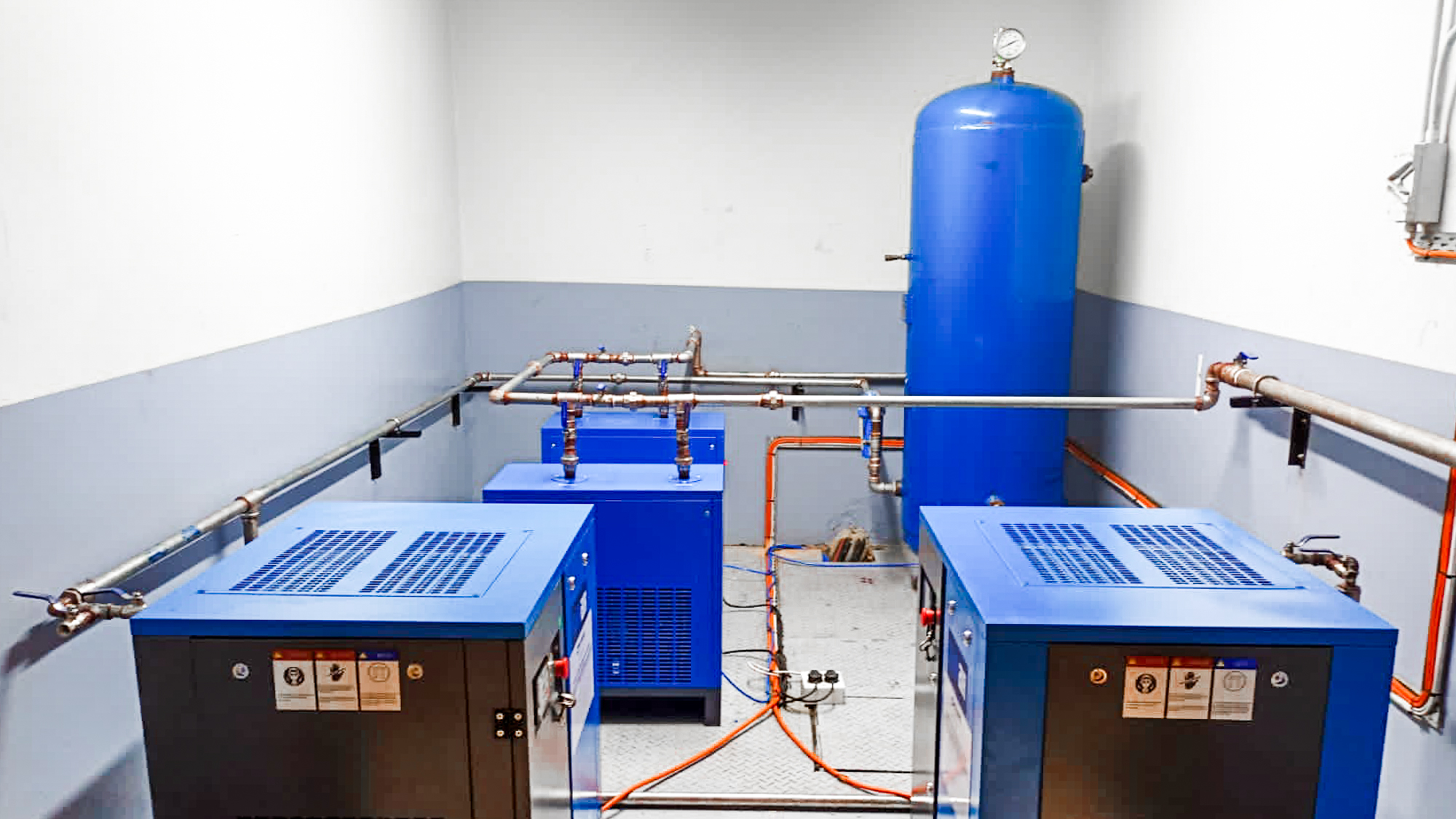Business
Roof Tile Cleaning – Pros and Cons

There are several apparent advantages and disadvantages of cleaning your roof that you should be aware of. On the one hand, it eliminates unnecessary build-ups, but on the other, you risk damaging the roof and maybe yourself. Furthermore, a lot of people and different homeowners hire experts such as roof tiles Philippines to help them clean their roof tiles. Nevertheless, this article will explain the four main benefits and drawbacks of roof cleaning and maintenance so that you may safely and properly clean your roof while avoiding harmful accidents or damage.
Pros of roof tile cleaning
Protects your roof from damage
Cleaning the Roof Cleaning your roof on a regular basis, according to Chorley services, prevents the formation of moss and other organisms, ensuring that your roof is healthy and clean all year! When moss grows in between the shingles on your roof, it can cause shingles to loosen or break, causing serious damage to your roof. This may be avoided with regular maintenance. Moss growth on your roof can cause shingles and tiles to deteriorate. This is crucial to remember since you don’t want moss or other organisms to wreak havoc on the roof’s structure or safety.
There will be no more moss.
Moss build-ups may be particularly difficult to remove if they’ve been allowed to grow significantly, which is why it’s best to remove them as soon as you detect them beginning to grow. The avoidance of moss build-up is one of the benefits that we talk about a lot at Just Clean. Moss and other organisms thrive on rooftops and within the tiles of your roof as a natural development. They are a live creature that feeds on the moisture on your roof and can cause significant harm to your roof’s structure.
Cons of roof tile cleaning
It’s Possible That Pressure Washing Is Dangerous
Cleaning the roof Chorley highly suggests using the proper tools while cleaning your roof to avoid mishaps and save money in the long term. Pressure washing is not only hazardous, but it’s also a bad idea. While it may make the process of cleaning your roof go faster, it will also do harm to your roof. Using a standard pressure washer on your roof may result in water damage and shingle dislodgement, rendering your roof unsafe.
Shingle Granules Loss
To avoid this problem, make sure you scrub your roof with the appropriate cleaning equipment while dealing with moss and other growths. The shingle granules on each tile will be damaged if you treat and clean your roof harshly. This implies that harsh handling may cause them to become dislodged or fractured.
The Final Word
After reading this article, now you know everything that is related to roof tiles cleaning including but not limited to what is it and what are the advantages and disadvantages of that process. All you have to do now is read this article carefully and maybe consult with an expert that can help you.
Business
Revolutionizing Medical Insurance: The Role of Chatbots

Technology plays an important role in shaping how services are delivered. Among these technological advancements, chatbots stand out as a particularly influential tool.
These AI-driven assistants are transforming the industry by improving customer service, streamlining claims processing, and providing critical data-driven insights. This article explores how chatbots are being integrated into group medical insurance and the myriad benefits they offer to both insurers and insured groups.
Introduction to Chatbots in Group Medical Insurance
Chatbots are artificial intelligence (AI) systems that conduct conversations via textual or auditory methods. In the context of group medical insurance, chatbots are programmed to understand and respond to a variety of inquiries related to medical coverage, policy details, claims submission, and more.
They serve as the first line of interaction for employees seeking information about their health benefits, making them a crucial component of modern customer service strategies in insurance.
Key Benefits of Implementing Chatbots
You’ve heard about chatbots before, so let’s look at the main benefits of implementing them.
Better Customer Service
The immediate benefit of chatbots in group medical insurance is the improvement of customer service. These AI systems are available 24/7, providing real-time responses to insured members’ questions.
This constant availability is particularly beneficial for organizations with a diverse workforce, including remote or international employees who may need assistance outside of regular business hours.
Streamlining Claims Processing
Chatbots significantly improve the efficiency of claims processing. They can guide employees through the claims submission process, help gather necessary documentation, and answer any questions that arise along the way. By handling routine inquiries and initial steps in the claims process, chatbots free up human agents to focus on more complex cases, thus speeding up overall processing times.
Cost Reduction
Deploying chatbots can lead to substantial cost savings for insurance companies and insured organizations. By automating routine tasks and customer interactions, chatbots reduce the workload on human customer service agents, allowing insurance providers to allocate resources more efficiently. This automation also minimizes the risk of human error, potentially reducing the costs associated with claims disputes and corrections.
Personalized Assistance
AI technology enables chatbots to deliver personalized assistance to users. By analyzing past interactions and user data, chatbots can tailor their responses to better meet the specific needs of individual members. This level of personalization not only improves the user experience but also helps employees make better-informed decisions about their health insurance options.
Proactive Health Management
Beyond handling inquiries and claims, chatbots in group medical insurance can play a proactive role in health management. They can send reminders for preventive health screenings, provide tips for healthy living, and inform members about wellness programs offered by their employer. This proactive approach can help improve overall health outcomes and reduce healthcare costs for both employees and employers.
Challenges and Considerations
While chatbots offer numerous advantages, there are challenges to consider. Privacy and security are paramount, as chatbots handle sensitive personal health information. Ensuring compliance with healthcare regulations is essential.
Additionally, the effectiveness of a chatbot depends on its programming and the quality of its AI algorithms. Ongoing training and updates are necessary to maintain accuracy and relevance of information.
Conclusion
Chatbots are redefining everything nowadays.
Through their ability to improve customer service, streamline processes, reduce costs, and provide personalized support, chatbots are becoming an indispensable tool for insurance providers.
As technology continues to advance, the capabilities of chatbots will expand, further transforming the industry and improving the experiences of insured groups.
By embracing these AI-powered tools, insurers can deliver more effective, efficient, and personalized health insurance services.
Business
Guarding Your Business: Conducting a Comprehensive Physical Security Risk Assessment

In today’s dynamic and often unpredictable business environment, securing physical assets and ensuring the safety of personnel is more crucial than ever. A comprehensive physical security risk assessment is essential for identifying vulnerabilities and developing strategies to mitigate risks. This article explores the vital steps involved in conducting an effective security risk assessment, offering organizations insights on how to protect their operations comprehensively.
Understanding Physical Security Risk Assessment
A physical security risk assessment is a systematic process that helps organizations understand the potential threats to their physical assets, including buildings, equipment, and personnel. The assessment involves evaluating existing security measures, identifying potential vulnerabilities, and recommending enhancements to strengthen overall security. By forbel alarms, businesses can ensure that their security protocols are robust, responsive, and appropriate for the specific challenges they face.
Key Components of Risk Assessment
The process of conducting a physical security risk assessment includes several critical components:
- Identifying and Valuing Assets: The first step involves identifying what needs protection. This could range from physical assets like technology and machinery to soft assets like data and intellectual property.
- Threat Identification: Understanding the types of threats your business may face, from theft and vandalism to natural disasters and terrorism, is crucial for developing an effective security strategy.
- Vulnerability Assessment: This involves examining how exposed your assets are to potential threats. It includes reviewing current security measures like surveillance systems, access controls, and barriers to determine their effectiveness and any weaknesses.
- Risk Evaluation: This step assesses the potential impact of identified threats materializing and how likely they are to occur, allowing businesses to prioritize risks based on their severity and likelihood.
- Mitigation Strategies: Based on the risk evaluation, businesses can then develop tailored strategies to mitigate identified risks, often involving a combination of physical security enhancements, policy changes, and staff training.
Implementing Enhanced Security Measures
Once the assessment is complete, implementing the recommended security measures is critical. This may include upgrading physical barriers, enhancing surveillance systems, improving access controls, and revising emergency response protocols. Training staff on security best practices and the specific protocols of the organization is also crucial, as human elements play a significant role in security effectiveness.
For a deeper dive into the methodologies and benefits of this process, businesses can refer to Physical Security Risk Assessment, a detailed guide that walks through the nuances of evaluating and enhancing security measures tailored to an organization’s specific needs.
Conclusion
Conducting a comprehensive physical security risk assessment is not just about reacting to incidents but proactively managing and mitigating potential risks. With the guidance of experienced security professionals and a clear understanding of the principles outlined, businesses can safeguard their assets more effectively and create a safer working environment for everyone involved. By taking a strategic and informed approach to physical security, organizations can not only protect their current assets but also ensure the resilience and sustainability of their operations in the long run.
Business
Calculating Compressed Air Needs: Tools for Precise System Design

Designing an efficient compressed air system requires precise calculations to ensure that every component is tailored to the specific needs of an operation. This necessity highlights the importance of tools like the CFM Calculator and Pipe Velocity Calculator for Compressed Air provided by Fluid-Aire Dynamics. These tools play a crucial role in optimizing system design, allowing for accurate airflow measurements and efficient system configurations, which can significantly reduce energy costs and improve operational efficacy.
Importance of Accurate Airflow Calculations in Compressed Air Systems
Precise airflow calculations are essential in designing compressed air systems to ensure they operate efficiently without wasting energy. An overestimated need can lead to oversized equipment and higher operating costs, while an underestimated system may not meet the operational demands, leading to increased wear and potential failure.
Key Benefits of Accurate Calculations
- Energy Efficiency: Properly sized systems use less energy, as they are not overworking to meet compressed air demands.
- Cost Savings: Systems designed with precision require less frequent repairs and maintenance due to reduced strain on the system’s components.
- Optimal Performance: Accurate calculations ensure that systems provide enough compressed air for all tools and processes without faltering.
Fluid-Aire Dynamics’ CFM Calculator
The CFM (Cubic Feet per Minute) Calculator provided by Fluid-Aire Dynamics is an essential tool for businesses looking to design or update their compressed air systems. This calculator helps determine the correct amount of air flow needed based on the combined air consumption of all the pneumatic tools and equipment in operation.
Using the CFM Calculator
- Input Requirements: Users input various parameters, such as the number of tools in use, their individual CFM requirements, and total operational hours.
- Output Information: The calculator processes this information to output the total CFM required, helping users choose the right compressor size and configuration.
Enhancing Design with the Pipe Velocity Calculator for Compressed Air
In addition to calculating air needs, ensuring that compressed air moves through the system at the correct speed is crucial to maintain efficiency and prevent issues such as excessive pressure drop and condensation. The Pipe Velocity Calculator for Compressed Air from Fluid-Aire Dynamics assists in determining the optimal pipe size needed to maintain appropriate air velocity within the system.
Benefits of the Pipe Velocity Calculator
- Prevents Pressure Loss: Adequate pipe sizing calculated from the tool helps prevent significant pressure losses across the system.
- Avoids Condensation Issues: Maintaining the right velocity helps reduce the risk of moisture buildup in the air lines, which can lead to water in the system and potentially damage equipment.
Integrating Tools for Comprehensive System Design
By integrating the use of both the CFM Calculator and the Pipe Velocity Calculator, businesses can ensure that their compressed air systems are not only sized accurately but also laid out efficiently. This comprehensive approach to system design facilitates optimal performance and energy efficiency.
- System Layout Optimization: Proper calculations help in designing a system layout that minimizes turns and reduces the length of air travel, further enhancing efficiency.
- Improved Longevity and Reliability: Systems designed with precise calculations are likely to have a longer service life and higher reliability due to reduced operational strain.
The utilization of precise calculation tools provided by Fluid-Aire Dynamics underscores the importance of tailored system design in compressed air systems. By ensuring that all components are correctly sized and efficiently arranged, businesses can achieve significant operational improvements, reduce costs, and increase the reliability of their pneumatic tools and processes. These tools are indispensable for any operation looking to optimize their compressed air system for maximum performance and efficiency.
-

 Travel1 week ago
Travel1 week agoStrategic Use of Bagged Rock Salt for Airport Runway Safety
-

 Business1 week ago
Business1 week agoStreamlining Logistics with Bulk Cargo Containers and Shipping Essentials
-

 Business1 week ago
Business1 week agoExpanding Global Reach: Philippines-Based Call Center Solutions for Small Businesses
-

 Business1 week ago
Business1 week agoCalculating Compressed Air Needs: Tools for Precise System Design
-

 Development1 week ago
Development1 week agoEmergency Garage Door Repairs in Sunnyvale: Fast, Reliable Solutions
-

 Travel1 week ago
Travel1 week agoRevitalizing Oakville Homes: Landscaping and Exterior Painting Insights
-

 Tech1 week ago
Tech1 week agoFintech Hiring Solutions: Connecting Talent with Technology in Finance
-

 Fashion1 week ago
Fashion1 week agoStyling A Purple Necktie For Different Occasions: Formal Events To Casual Gatherings









